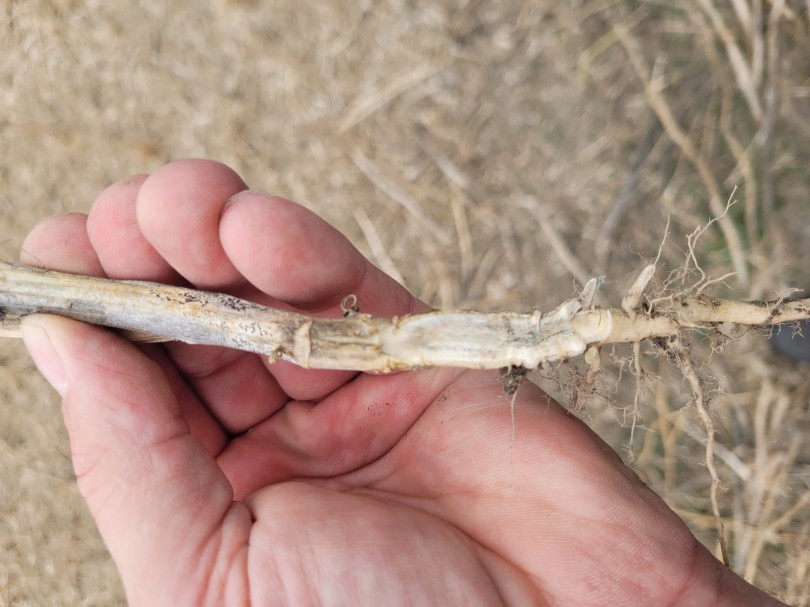Understanding Verticillium Stripe: Causes and Symptoms
Verticillium Stripe is a soil-borne fungal disease caused by the pathogen Verticillium longisporum. This fungus invades the plant's vascular system, leading to wilting and yellowing of leaves, early ripening, and eventually necrosis of the plant and shredding of the stem.
Streaking and senescence of half the stem is common with Verticillium Stripe. In some cases, you may also notice dark streaks along the stem, followed by microsclerotia, which will end up further spreading the disease. Another method of identification is to cut the stem at the base of the plant and look for grayish starburst pattern.
The Impact of Verticillium Stripe on Canola Yield and Quality
The presence of Verticillium Stripe can unfortunately lead to yield reductions in the field, with research ongoing to determine the exact extent of yield loss and how that correlates to incidence and severity of infection.
Moreover, the quality of the harvested canola can be compromised, with affected plants often producing seeds that are smaller and less viable, impacting their market value.
Scouting and Identification of Verticillium Stripe
Early detection of Verticillium Stripe is crucial for effective future management. Regular scouting of fields should be conducted as harvest approaches, focusing on areas with poor growth, unusual wilting symptoms, or premature ripening.
Soil tests can also be performed to assess the presence of Verticillium longisporum spores, allowing for proactive management strategies before symptoms appear. Once symptoms are present, stubble can be sent in for testing to confirm infection.
Management Practices to Mitigate Verticillium Stripe
Unfortunately, there are currently no fungicidal options to control Verticillium Stripe. Implementing crop rotation is one of the most effective management practices, as it disrupts the life cycle of the pathogen, decreasing the pathogen populations in the soil. Avoid planting canola or other susceptible crops in the same field for several years.
Due to this being a soil-borne pathogen, minimizing soil movement between fields and ensuring good sanitization practices of equipment and tools between fields can help to minimize the spread of the disease.
Additionally, selecting canola hybrids with higher levels of tolerance could reduce the impact of the disease. Currently, there are no commercially available canola hybrids with resistance to Verticillium Stripe available on the market, although companies are actively working on determining which hybrids are more or less tolerant to this disease. Always consult local agronomy resources to identify the hybrids best suited to your region.
With newly emerging diseases, it's important to stay engaged in continuous education and to stay in touch with your local agronomists regarding new information on disease management. This will empower you to make informed decisions and the best management practices for your farm.
To see Verticillium Stripe signs in a Manitoba field harvested in 2024, view our video below of Doug Ives, Eastern Manitoba Territory Manager, doing some scouting.


